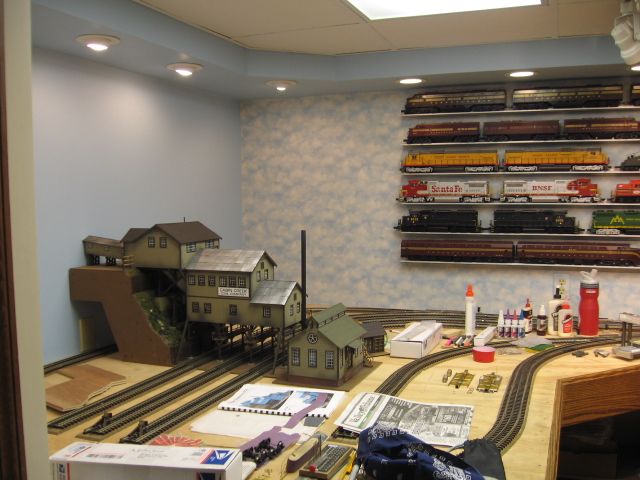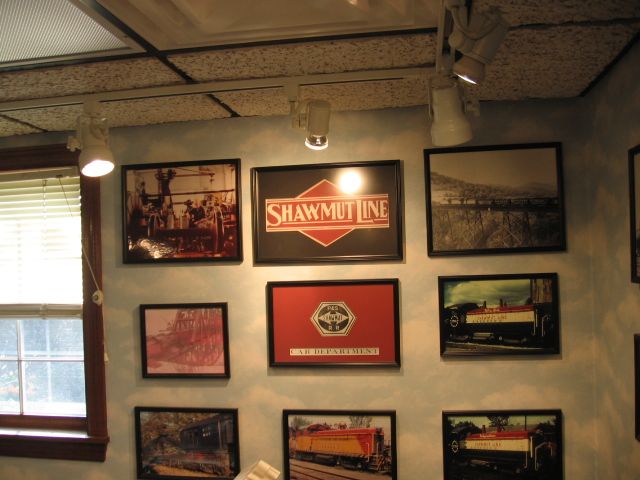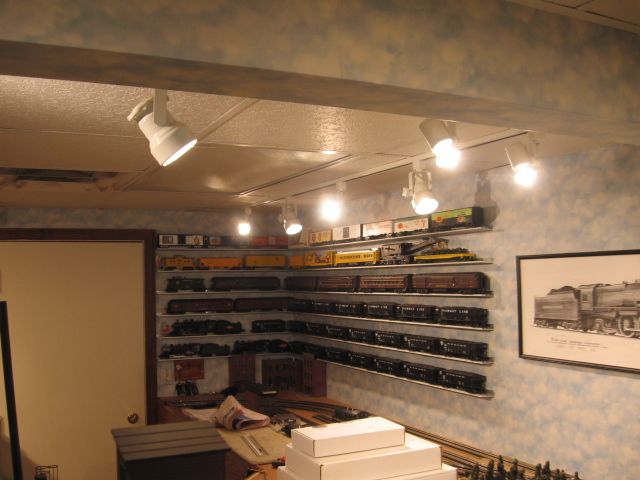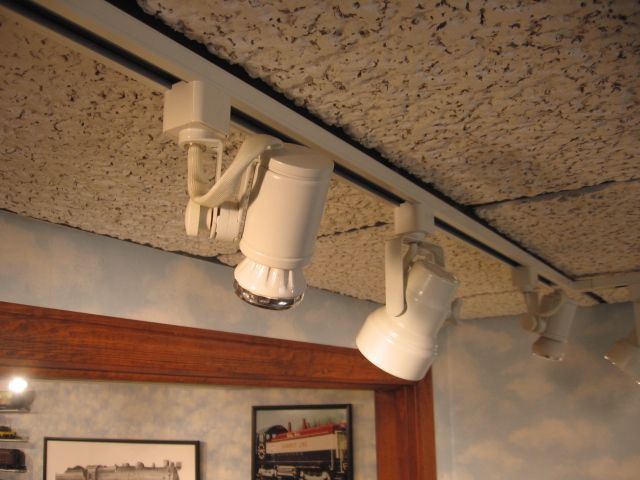Originally Posted by Ma and Pa:
This is good information. Maybe low-voltage isn't the way to go. Where did you get those fixtures, rev?
Actually, I originally saw the fixtures in a builders's supply store, where they were using them to accent brick and stone sample panels. I eventually found them in a "Lighting" store, you know one of those places that deals specifically in all kinds of lighting fixtures, from interior table lamps to outside driveway pole fixtures.
They had a major display of track lights. In most cases, the track itself is pretty standard, with many different styles of track heads. Here's a better pic of the track fixture itself. The head itself is pretty much all open, so heat dissapates nicely. Actually what you see inside the ring on the lower part of the lamp, is the bulb itself. I think they look kinda' neat, sort of an "Art Gallery/Commercial Look" style.
Also a shot of the trainroom as lit by the track lights only. I have 8 track heads, of which 5 are on one dimmer, and 3 on another. They are all on at max brightness in the pics. The last pic has all 8 fixtures in it. They throw a lot "softer" light than the recessed flourescent fixtures.
REV

















